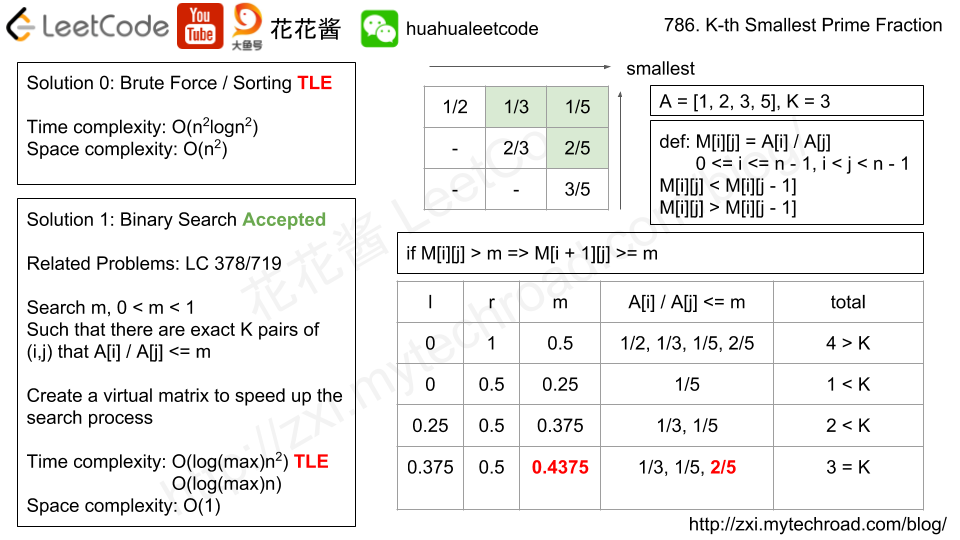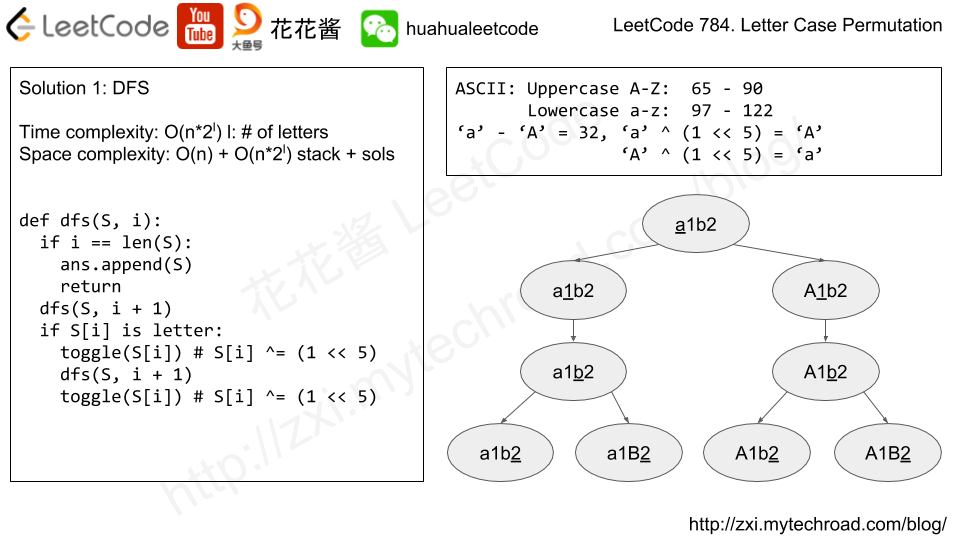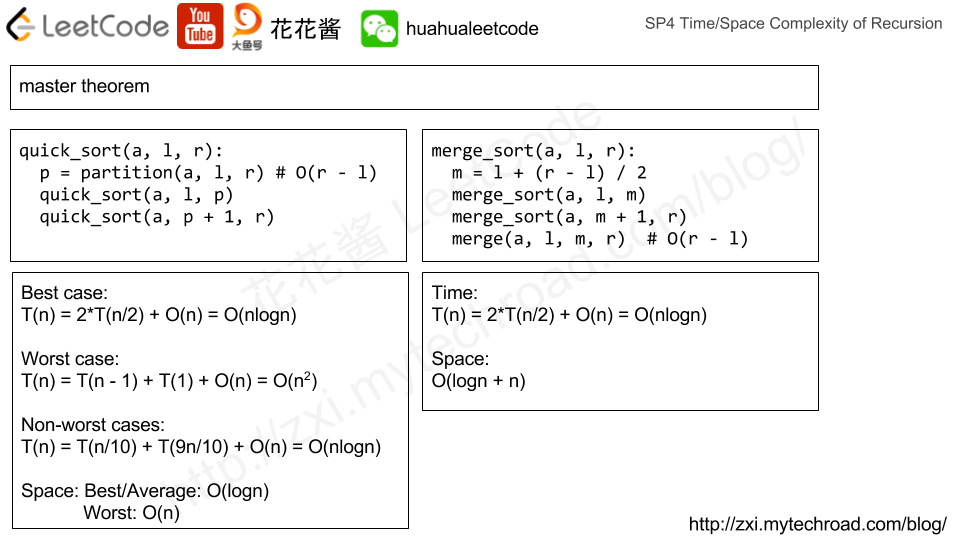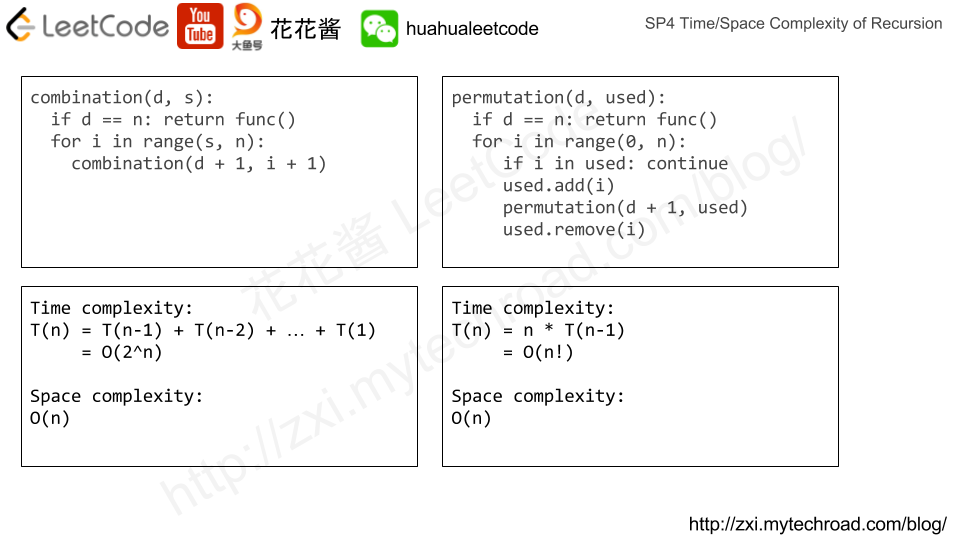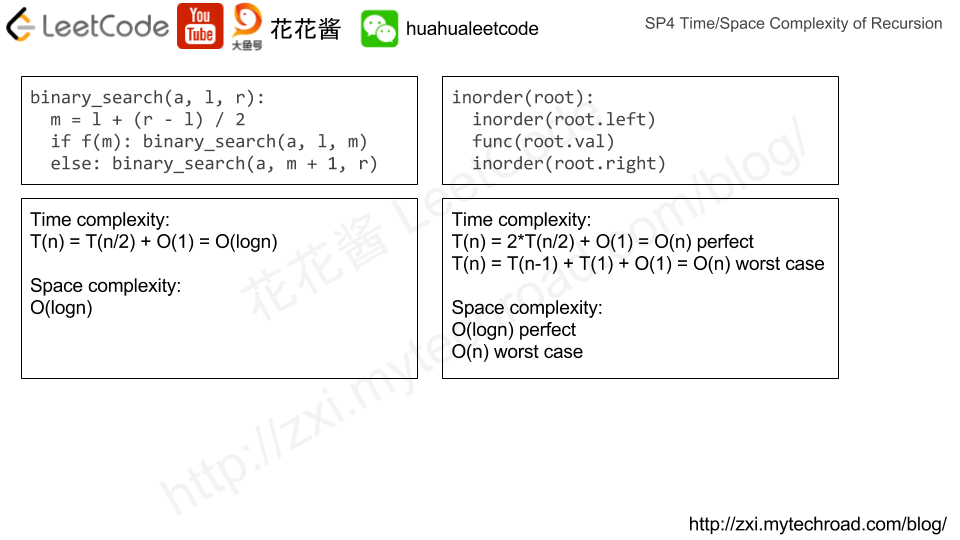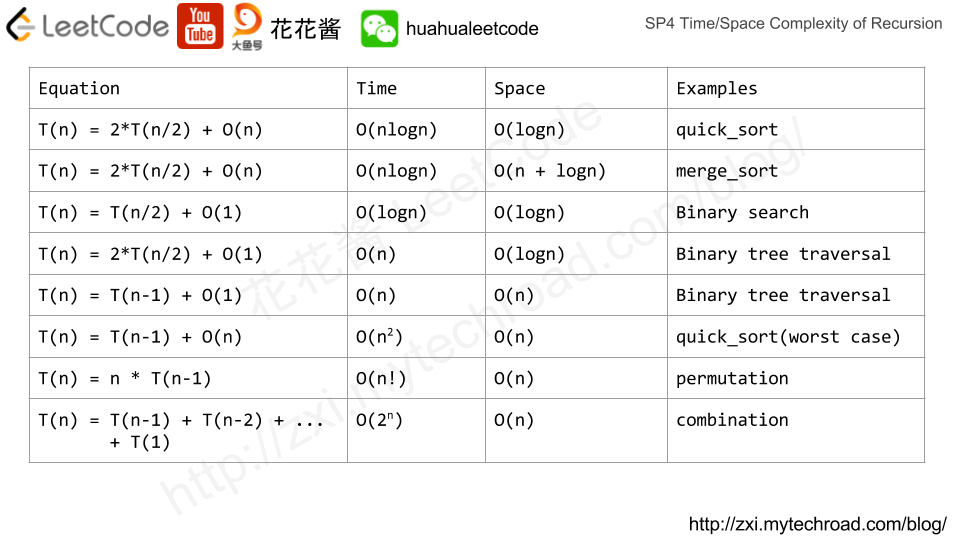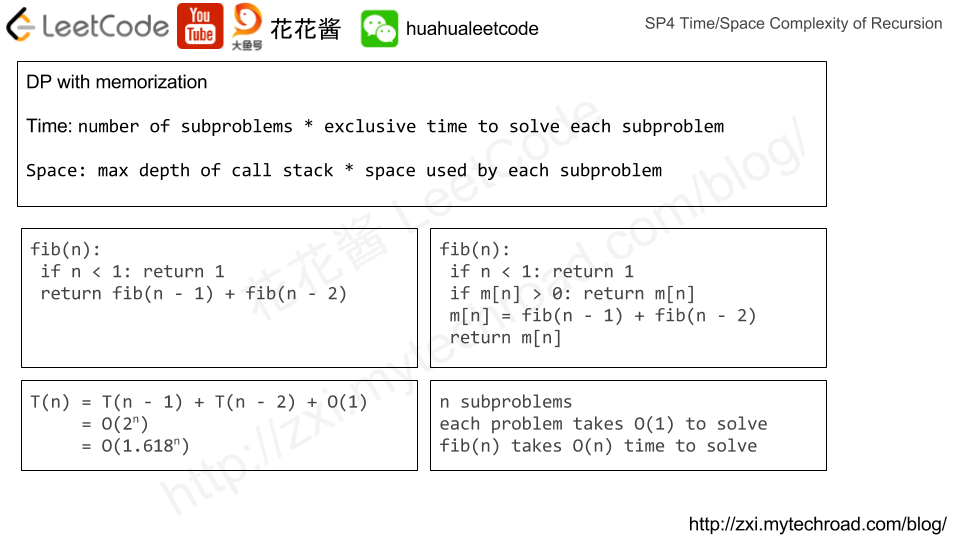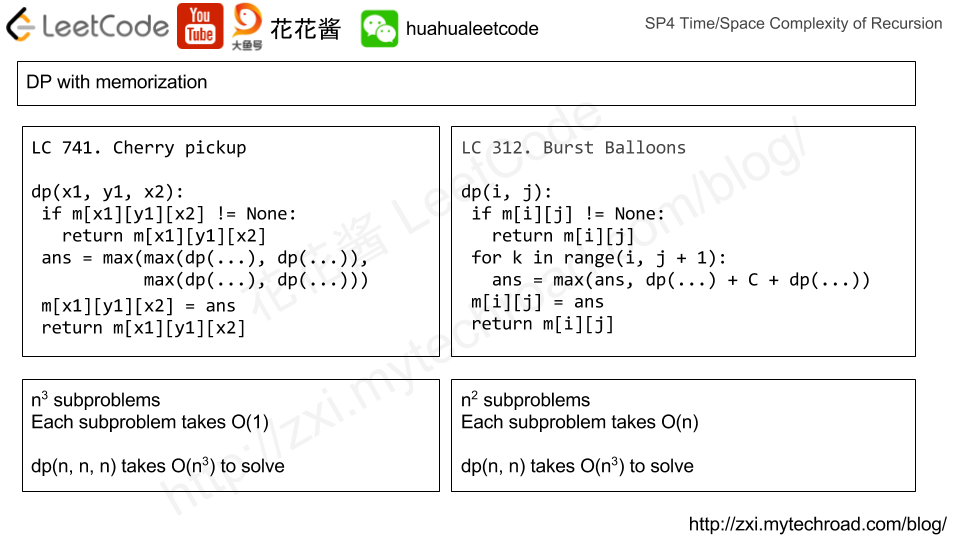VIDEO
How to analyze the time and space complexity of a recursion function?
如何分析一个递归函数的时间/空间复杂度?
We can answer that using master theorem or induction in most of the cases.
在大部分时候我们可以使用主方法和数学归纳法来进行解答。
First of all, we need to write down the recursion relation of a function.
首先我们要写出一个函数的递归表达式。
def func ( n ) :
if n < 0 : return 1
return func ( n / 2 ) + func ( n / 2 )
Let’s use T(n) to denote the running time of func with input size of n.
让我们用T(n)来表示func函数在输入规模为n的运行时间。
Then we have:
那么我们有:
T(n) = 2*T(n/2) + O(1)
a = 2, b = 2, c_crit = logb(a) = 1, f(n) = n^c, c = 0.
c < c_crit, apply master theorem case 1:
根据主方法第一条我们得到
T(n) = Θ(n^c_crit) = Θ(n)
Let’s look at another example:
def func ( n ) :
if n < 0 : return 1
s = 0
for i in range ( n ) :
s += i
return s + func ( n / 2 ) + func ( n / 2 )
T(n) = 2*T(n/2) + O(n)
a = 2, b = 2, c_crit = logb(a) = 1, f(n) = n^c, c = 1,
c = c_crit, apply master theorem case 2:
根据主方法第二条我们得到
T(n) =Θ(n^c_crit * (logn)^1)) = Θ(nlogn)
Cheatsheet
Equation
Time
Space
Examples
T(n) = 2*T(n/2) + O(n)
O(nlogn)
O(logn)
quick_sort
T(n) = 2*T(n/2) + O(n)
O(nlogn)
O(n + logn)
merge_sort
T(n) = T(n/2) + O(1)
O(logn)
O(logn)
Binary search
T(n) = 2*T(n/2) + O(1)
O(n)
O(logn)
Binary tree traversal
T(n) = T(n-1) + O(1)
O(n)
O(n)
Binary tree traversal
T(n) = T(n-1) + O(n)
O(n^2)
O(n)
quick_sort(worst case)
T(n) = n * T(n-1)
O(n!)
O(n)
permutation
T(n) = T(n-1)+T(n-2)+…+T(1)
O(2^n)
O(n)
combination
For recursion with memorization:
Time complexity: |# of subproblems| * |exclusive running time of a subproblem|
Space complexity:|# of subproblems| + |max recursion depth| * |space complexity of a subproblem|
Example 1:
def fib ( n ) :
if n < 1 : return 1
if m [ n ] : return m [ n ]
m [ n ] = fib ( n - 1 ) + fib ( n - 2 )
return m [ n ]
To solve fib(n), there are n subproblems fib(0), fib(1), …, fib(n)
each sub problem takes O(1) to solve
Time complexity: O(n)
Space complexity: O(n) + O(n) * O(1) = O(n)
Example 2:
LC 741 Cherry Pickup
dp ( x1 , y1 , x2 ) :
if min ( x1 , y1 , x2 ) < 0 : return 0
if m [ x1 ] [ y1 ] [ x2 ] : return m [ x1 ] [ y1 ] [ x2 ]
ans = max ( dp ( x1 - 1 , y1 , x2 - 1 ) ,
dp ( x1 , y1 - 1 , x2 ) ,
dp ( x1 , y1 - 1 , x2 - 1 ) ,
dp ( x1 - 1 , y1 , x2 ) )
m [ x1 ] [ y1 ] [ x2 ] = ans
return m [ x1 ] [ y1 ] [ x2 ]
To solve dp(n, n, n), there are n^3 subproblems
each subproblem takes O(1) to solve
Max recursion depth O(n)
Time complexity: O(n^3) * O(1) = O(n^3)
Space complexity: O(n^3) + O(n) * O(1) = O(n^3)
Example 3:
LC 312: Burst Balloon
dp ( i , j ) :
if m [ i ] [ j ] : return m [ i ] [ j ]
for k in range ( i , j + 1 ) :
ans = max ( ans , dp ( i , k - 1 ) + C + dp ( k + 1 , j ) )
m [ i ] [ j ] = ans
return m [ i ] [ j ]
To solve dp(0, n), there are n^2 subproblems dp(0, 0), dp(0, 1), …, dp(n-1, n)
each subproblem takes O(n) to solve
Max recursion depth O(n)
Time complexity: O(n^2) * O(n) = O(n^3)
Space complexity: O(n^2) + O(n) * O(1) = O(n^2)
Slides:
